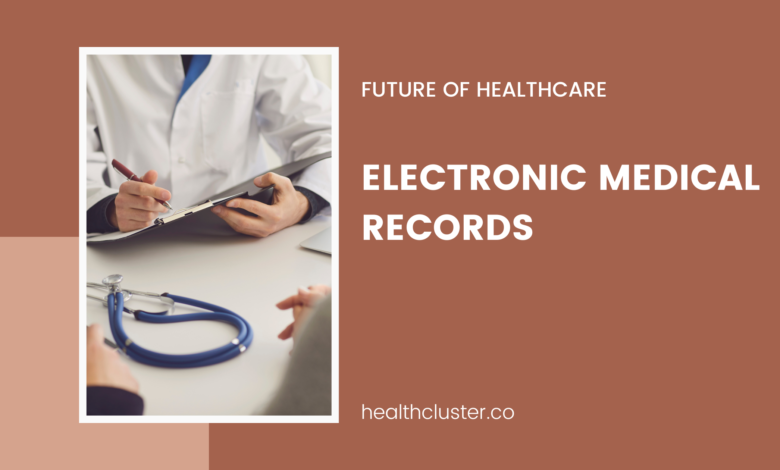The Future of Healthcare Understanding Electronic Medical Records
Electronic Medical Records

Introduction
In today’s rapidly evolving healthcare landscape, Electronic Medical Records (EMRs) have emerged as a cornerstone of patient care, revolutionizing how medical information is stored, accessed, and shared. This comprehensive guide explores the future of healthcare through the lens of EMRs, highlighting their benefits, challenges, and the impact they have on patient outcomes.
What Are Electronic Medical Records?
Electronic Medical Records are digital versions of patients’ paper charts. They contain a patient’s medical history, diagnoses, medications, treatment plans, immunization dates, allergies, radiology images, and laboratory test results. EMRs are designed to streamline the clinician’s workflow, making it easier to track patient data over time and improve the quality of care.
Key Features of EMRs
- Accessibility: EMRs allow healthcare providers to access patient information from multiple locations, facilitating better coordination of care.
- Real-Time Updates: Changes in patient status can be recorded immediately, ensuring that all providers have access to the most current information.
- Data Analytics: EMRs enable the collection and analysis of patient data to improve healthcare outcomes and inform clinical decisions.
Benefits of Electronic Medical Records
1. Improved Patient Care
One of the primary benefits of EMRs is their ability to enhance the quality of patient care. By providing real-time access to a patient’s medical history, providers can make informed decisions quickly, reducing the likelihood of errors. For instance, if a patient has a documented allergy, this information can be flagged immediately during prescribing.
2. Increased Efficiency
EMRs streamline administrative processes, reducing the time spent on paperwork. This efficiency allows healthcare professionals to focus more on patient care rather than administrative tasks. Scheduling, billing, and coding are simplified, leading to shorter wait times and improved patient satisfaction.
3. Enhanced Communication
EMRs facilitate better communication among healthcare providers. When multiple specialists are involved in a patient’s care, EMRs ensure that everyone is on the same page regarding the patient’s treatment plan, history, and progress. This is particularly crucial for patients with chronic conditions requiring multidisciplinary care.
4. Better Data Management
With EMRs, healthcare organizations can manage vast amounts of data more effectively. The ability to store, retrieve, and analyze patient data helps in tracking outcomes and identifying trends, ultimately leading to better healthcare policies and practices.
Challenges of Electronic Medical Records
1. Implementation Costs
Transitioning to an EMR system can be expensive. Initial costs may include software purchase, training staff, and updating infrastructure. Small practices may find it particularly challenging to absorb these costs.
2. Data Security and Privacy Concerns
The digitization of health records raises concerns about data security. Healthcare organizations must ensure that patient information is protected from breaches and unauthorized access. Compliance with regulations such as HIPAA is crucial to maintain patient confidentiality.
3. Interoperability Issues
While many EMR systems are designed to be compatible with one another, interoperability remains a challenge. Different systems may not communicate effectively, making it difficult for providers to share information seamlessly. This lack of integration can hinder coordinated care.
The Future of EMRs in Healthcare
1. Integration with Artificial Intelligence (AI)
As technology advances, the integration of AI with EMRs is becoming more prevalent. AI can help analyze patient data, predict outcomes, and even assist in diagnostics. This technology promises to enhance the decision-making process and improve patient care.
2. Telemedicine and EMRs
The rise of telemedicine, especially post-pandemic, has highlighted the importance of EMRs. Integrating telehealth services with EMRs allows for a seamless experience for patients and providers, enabling remote consultations while maintaining comprehensive health records.
3. Patient Empowerment through Health Portals
Future EMRs are likely to empower patients by providing access to their health information through secure online portals. This transparency encourages patients to take an active role in their health management, fostering better communication with their healthcare providers.
4. Enhanced Analytics for Population Health
EMRs will play a crucial role in population health management. Advanced analytics tools can process large datasets to identify health trends and disparities within communities, enabling healthcare providers to develop targeted interventions.
Conclusion
The future of healthcare is undeniably intertwined with the evolution of Electronic Medical Records. As we continue to innovate and refine EMR systems, the potential to improve patient care, streamline operations, and harness data for better health outcomes is immense. By addressing the challenges associated with EMRs, the healthcare industry can fully realize the benefits of this transformative technology, paving the way for a more efficient and effective healthcare system.





